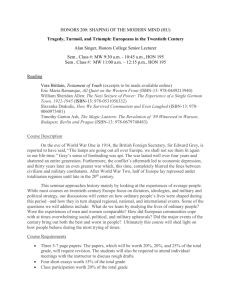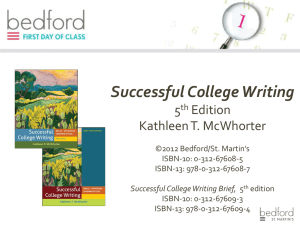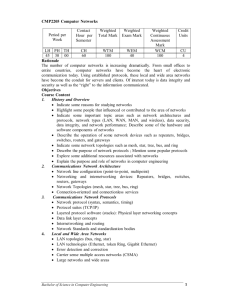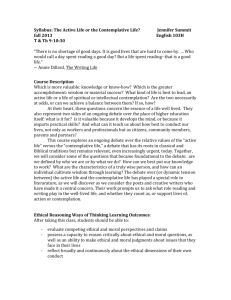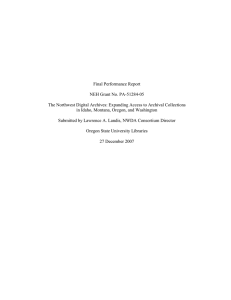NIFA References 7-13-14 Arnett, J. (1997). Native and naturalized
advertisement
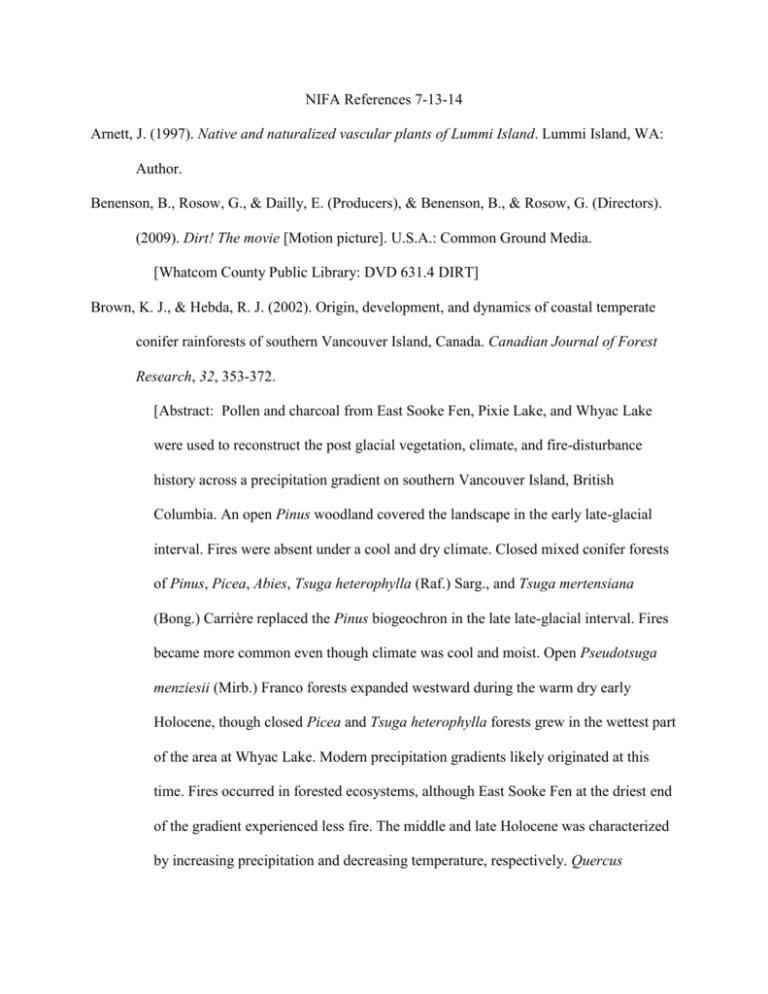
NIFA References 7-13-14 Arnett, J. (1997). Native and naturalized vascular plants of Lummi Island. Lummi Island, WA: Author. Benenson, B., Rosow, G., & Dailly, E. (Producers), & Benenson, B., & Rosow, G. (Directors). (2009). Dirt! The movie [Motion picture]. U.S.A.: Common Ground Media. [Whatcom County Public Library: DVD 631.4 DIRT] Brown, K. J., & Hebda, R. J. (2002). Origin, development, and dynamics of coastal temperate conifer rainforests of southern Vancouver Island, Canada. Canadian Journal of Forest Research, 32, 353-372. [Abstract: Pollen and charcoal from East Sooke Fen, Pixie Lake, and Whyac Lake were used to reconstruct the post glacial vegetation, climate, and fire-disturbance history across a precipitation gradient on southern Vancouver Island, British Columbia. An open Pinus woodland covered the landscape in the early late-glacial interval. Fires were absent under a cool and dry climate. Closed mixed conifer forests of Pinus, Picea, Abies, Tsuga heterophylla (Raf.) Sarg., and Tsuga mertensiana (Bong.) Carrière replaced the Pinus biogeochron in the late late-glacial interval. Fires became more common even though climate was cool and moist. Open Pseudotsuga menziesii (Mirb.) Franco forests expanded westward during the warm dry early Holocene, though closed Picea and Tsuga heterophylla forests grew in the wettest part of the area at Whyac Lake. Modern precipitation gradients likely originated at this time. Fires occurred in forested ecosystems, although East Sooke Fen at the driest end of the gradient experienced less fire. The middle and late Holocene was characterized by increasing precipitation and decreasing temperature, respectively. Quercus garryana Dougl. stands spread westward during the mid-Holocene. Extant closed Tsuga heterophylla and Cupressaceae (Thuja plicata Donn. ex D. Don) forests arose in the wetter part of the gradient, whereas Pseudotsuga forests occupied drier eastern areas. During this interval, fires were rare in wet western regions but apparently more common in dry eastern regions.] Crawford, M. (2010). Creating a forest garden: Working with nature to grow edible crops. Totnes, England: Green Books. [ISBN-10: 1900322625, ISBN-13: 978-1900322621; Whatcom County Library System: Oversize 635 CRAWFORD 2010] Hart, R. (1996). Forest gardening: Cultivating an edible landscape. White River Junction, VT: Chelsea Green. [ISBN-10: 0930031849, ISBN-13: 9780093003184; Bellingham Public Library 631.58 HART 1996; R. Hart pioneered temperate agroforestry at a home scale.] Hemenway, T. (2009). Gaia's garden: A guide to home-scale permaculture (2nd ed.). White River Junction, VT: Chelsea Green. [ISBN-10: 1603580298, ISBN-13: 978-1603580298; Whatcom County Library System: 635.048 HEMENWAY 2009] Heritage Resources. (n.d.). Retrieved July 13, 2014, from Heritage Resources: Center for Pacific Northwest Studies, Special Collections, and University Archives website: http://library.wwu.edu/heritageresources [Includes digital collections] Jacke, D., & Toensmeier, E. (2005). Edible forest gardens: Ecological design and practice for temperature climate permaculture (Vol. 2). White River Junction, VT: Chelsea Green. [ISBN-10: 1931498806, ISBN-13: 978-1931498807; Whatcom County Library System: 635.0915 JACKE 2005 v.02] Jacke, D., & Toensmeier, E. (2005). Edible forest gardens: Ecological vision and theory for temperature climate permaculture (Vol. 1). White River Junction, VT: Chelsea Green. [ISBN-10: 1931498792, ISBN-13: 978-1931498791; Whatcom County Library System: 635.0915 JACKE 2005 v.01] Judd, M. (2013). Edible landscaping with a permaculture twist: How to have your yard and eat it too. White River Junction, VT: Chelsea Green Publishing. [ISBN-10: 0615873790, ISBN-13: 978-0615873794; Whatcom County Library System: 635-0484 JUDD 2013] Law, B. (2001). The woodland way: A permaculture approach to sustainable woodland management. Hampshire, England: Permanent Publications. [ISBN-10: 1856230090, ISBN-13: 978-1856230094; Whatcom County Library System: 635.9676 LAW 2001; Note: Second edition published 2013] Northwest natural yard and garden. (2013). Retrieved August 25, 2013, from Northwest Yard and Garden website: http://www.kingcounty.gov/environment/stewardship/nw-yard-andgarden.aspx NWDA. (n.d.). Retrieved July 13, 2014, from Northwest Digital Archives (NWDA) website: http://nwda.orbiscascade.org/ [The Northwest Digital Archives (NWDA) provides enhanced access to archival and manuscript collections in Idaho, Montana, Oregon, Alaska, Utah, and Washington through a union database of Encoded Archival Description (EAD) finding aids. See the Contact Us page for a list of the NWDA consortium members. Also see the Western Washington University, Heritage Resources at <http://library.wwu.edu/heritageresources>.] Penner, T. (2010, October 14). Grandview U'uqinak'uuh Community School Yard. Retrieved August 25, 2013, from Urban Farmer Notes website: http://www.cityfarmer.org/grandview.html#grandview Resources: Research. (n.d.). Retrieved July 13, 2014, from Center for the Study of the Pacific Northwest website: http://www.washington.edu/uwired/outreach/cspn/Website/Resources/Research.html [Includes links to various archival resources] Shepard, M. (2013). Restoration agriculture: Real-world permaculture for farmers. Austin, TX: Acres U.S.A. [ISBN-10: 1601730357, ISBN-13: 978-1601730350; Whatcom County Library System: 631.58 SHEPARD 2013] Telling the Story of the Land Working Group. (2013). NIFA Project Narrative: Telling the Story of the Land: Revitalizing traditional plant knowledge and harvest with a view toward sustainability. Unpublished manuscript, Northwest Indian College, Bellingham, WA. [project narrative for grant proposal funded by National Institute of Food and Agriculture (NIFA)] Thompson, J. W. (n.d.). J.W. Thompson photographs, 1952-1959. [Worldcat.org: Photographs of Indians of western Washington State, mostly taken on reservations. Subjects include individual and family posed portraits, school photographs, and images of dancing and ceremonies, fishing and fish preparation scenes, woodcarving, and basket weaving. Tribes depicted: Chehalis, Chinook, Duwamish, Lummi, Makah, Quileute, Quinault, Suquamish, Swinomish, Tulalip, and Yakima (Yakama). Also see Guide to the J.W. Thompson Photographs 1952-1959 at http://nwda.orbiscascade.org/ark:/80444/xv41683. The material described in this catalog record is located in the collections of the Sophie Frye Bass Library, Museum of History & Industry, Seattle, WA.] Turner, N., & Turner, K. (2008). “Where our women used to get the food”: Cumulative effects and loss of ethnobotanical knowledge and practice; case study from coastal British Columbia. Botany, 86, 103-115. [Abstract: Knowledge and practices of indigenous peoples relating to local plants used for food, medicine, materials, and other purposes are threatened in many parts of the world. The reasons for declining knowledge and use of traditional resources are complex and multifaceted. We review a series of case examples of culturally valued food plants in British Columbia and identify a suite of interacting social and environmental factors that have resulted in decreased use of and dwindling cultural knowledge about these plants over the past 150 years. Reasons for this loss include compounding influences of changing knowledge systems owing to religious conversion and residential schools, loss of indigenous languages, loss of time and opportunity for traditional practices owing to participation in the wage economy, increasing urbanization of indigenous populations, loss of access to traditional resources, restriction of management practices for sustaining these resources, and most recently, forces of globalization and industrialization. Efforts to renew and restore traditional practices and relationships with plants and environments must recognize the cumulative effects of these factors and find ways to retain and reinforce the knowledge and practices still held by individuals and communities, to reverse some of the negative influences on cultural retention, and to develop new, relevant, and effective ways to revitalize languages, cultures, and ethnobotanical knowledge within contemporary contexts. Keywords: indigenous peoples, ethnobotany, British Columbia, traditional food, food security] Turner, N. J., Ari, Y., Berkes, F., Davidson-Hunt, I., Ertug, Z. F., & Miller, A. (2009). Cultural Management of Living Cultural management of living trees: An international perspective. Journal of Ethnobiology, 29(2), 237-270. [Abstract: Culturally modified trees, or CMTs, are a phenomenon of forest-dwelling peoples worldwide, from North America to Scandinavia, to Turkey, to Australia. Living trees from which materials are harvested (edible inner bark, pitch and resin, bark, branches), or which are modified through coppicing and pollarding to produce wood of a certain size and quality, or which are marked in some way for purposes of art, ceremony, or to indicate boundary lines or trails, all represent the potential of sustainable use and management of trees and forested regions. Often their use is associated with particular belief systems or approaches to other life forms that result in conservation of standing trees and forests, and preserving or enhancing their habitat value and productivity, even while they serve as resources for people. Various types of culturally modified trees have religious or spiritual significance, tying people to their ancestors who used the trees before them, and signifying traditional use and occupancy of a given region. Although some CMTs are legally protected to some extent in some jurisdictions, many are at risk from industrial forestry, urban expansion and clearing land for agriculture, and immense numbers of CMTs from past centuries and decades have already been destroyed. The diverse types, and the patterns of CMT creation and use, need further study; these trees, collectively, are an important part of our human heritage.] Turner, N. J., & Hebda, R. J. (2012). Saanich ethnobotany: Culturally important plants of the WSANEC people. Victoria, BC: Royal British Columbia Museum. Updegrave, C., Marshall, K. F., & Maria, M. (2010). Intellectual House research resource guide. Seattle, WA: University of Washington. [Available as PDF at: http://depts.washington.edu/native/pdf/IntellectualHouse.pdf] Vogl, C. R., Vogl-Lukasser, B., & Puri, R. K. (2004). Tools and methods for data collection in ethnobotanical studies of homegardens. Field Methods, 16(3), 285-306. http://dx.doi.org/10.1177/1525822X04266844 [Available online as PDF as orgprints.org/7037/1/voglFM163.pdf] Weiser, A., & Lepofsky, D. (n.d.). Ancient Land Use and Management of Ebey's Prairie, Whidbey Island, Washington. Journal of Ethnobiology, 29(2), 184-212. [Abstract: Anthropogenic prairies or meadows along the Northwest Coast of North America are herbaceous lowland openings in a forest-dominated landscape that were historically maintained by indigenous people through intentional burning and other management techniques. These anthropogenic ecosystems were once relatively common in the Northwest, but today are threatened because of the cessation of traditional resource management practices often coupled with widespread development and fire suppression. In this study, we explore the long-term history of Ebey's Prairie, an anthropogenic prairie on Whidbey Island, WA. We use analyses of soils, cultural features, archaeobotanical remains, and artifacts to demonstrate that people have been using the Ebey's Prairie locale for a variety of activities over a broad time scale (about 10,000 to 250 years B.P.). Within at least the last 2,300 years people began setting fires to create and maintain a “prairie” landscape. From that time onward, people used this landscape to harvest a range of open ecosystem resources. Understanding the long-term cultural and natural history of Ebey's and other prairies is a fundamental first step to managing these ecosystems for the future.] Whitefield, P. (2002). How to make a forest garden (3rd ed.). Hampshire, England: Permanent. [ISBN-10: 1856230082, ISBN-13: 978-1856230087]

